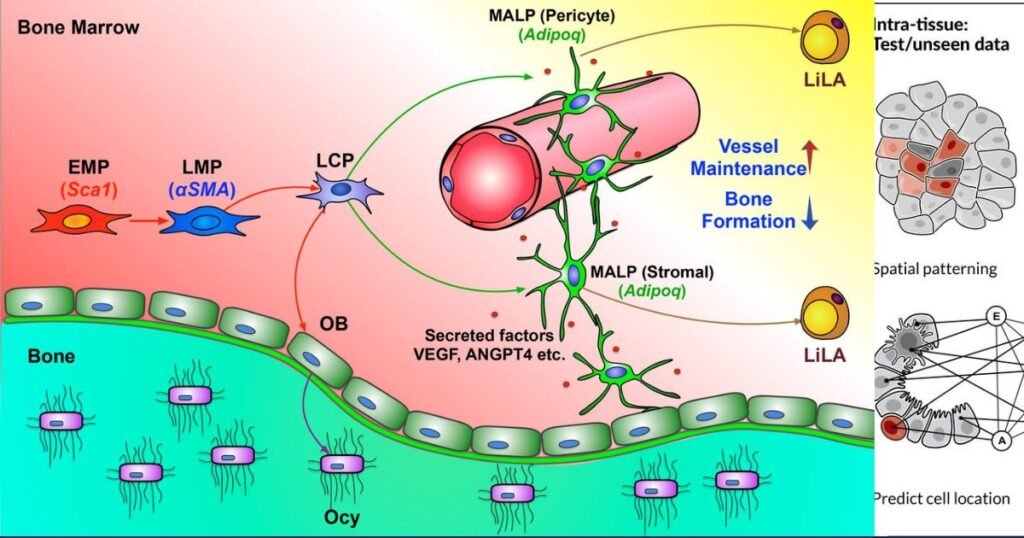Introduction
Over the past decade, single cell transcriptomics has emerged as a powerful new tool for studying gene expression and regulation. Whereas traditional transcriptomic methods like RNA-sequencing analyze RNA from bulk tissue samples containing millions Single Cell Transcriptomics of cells, single cell approaches allow gene expression to be measured in individual cells. This opens up entirely new realms of biological investigation by revealing heterogeneity between cells that would otherwise be masked in bulk analyses.
Read More: Chromosome Cell

Single cell transcriptomics provides unprecedented resolution into tissue composition, cell differentiation trajectories, regulatory networks, and other processes fundamentally driven by gene expression patterns in individual cells. In this article, we’ll explore what single cell transcriptomics is, how it works, the insights it provides, and current limitations and future directions for the field.
What is Single Cell Transcriptomics?
Single cell transcriptomics refers to methods for measuring RNA content in individual cells. The two most common techniques are:
- Single cell RNA sequencing (scRNA-seq): This technique isolates individual cells, converts the RNA into cDNA, amplifies it using PCR, and sequences the cDNA to determine which genes are expressed within each cell.
- Single molecule RNA fluorescence in situ hybridization (smRNA-FISH): This approach uses fluorescently labeled probes that bind to specific RNA transcripts in fixed cells. Imaging then allows gene expression to be quantified in single cells based on probe fluorescence.
Both scRNA-seq and smRNA-FISH allow researchers to create gene expression profiles for each individual cell. When scaled to analyze thousands or millions of single cells from a sample, the result is an unprecedented cell-by-cell view of transcriptional variation.
Insights from Single Cell Transcriptomics
By profiling gene expression in individual cells, single cell transcriptomics provides novel biological insights across many areas:
- Cell heterogeneity – Different cells of the same type show variation in gene expression. This heterogeneity allows division of labor and functional specialization. Single cell data maps out these differences.
- Rare cell types – Important but rare cell types like stem cells can be hard to purify. Single cell methods let them be studied in bulk tissue samples.
- Developmental trajectories – Single cell data reveals step-by-step transitions between cell types during development and differentiation.
- Cell interactions – Expression profiles shed light on how cells communicate and influence each other within tissues.
- Tumor ecology – Cancerous tumors contain diverse cell populations. Single cell analysis maps this diversity and relationships between malignant and non-malignant cells.
- Regulatory networks – Computational analysis of single cell data allows gene regulatory networks and interactions to be inferred at cellular resolution.

These insights advance our understanding of development, tissue homeostasis, disease progression, and more. As single cell techniques continue improving, so will our biological discoveries.
Current Limitations and Future Advances
While transformative, single cell transcriptomics does have some current limitations:
- Throughput – Current methods only allow tens of thousands of cells to be profiled per sample. This limits insights into rarer cell populations. Throughput is rapidly increasing however.
- Data complexity – The large datasets require sophisticated computational analysis. Methods are still being improved.
- RNA instability – The fragility of RNA makes preservation challenging. Future advances may allow more accurate in vivo analysis.
- Cost – Single cell techniques remain costly to apply at large scale. Dropping sequencing costs could enable routine use.
Despite current constraints, single cell transcriptomics has firmly established itself as a foundational tool in modern biology. Ongoing improvements in throughput, analysis, and cost will drive ever deeper insights into how gene expression regulates cellular function.
Conclusion
The advent of single cell transcriptomics has been a boon for diverse areas of biological and medical research. By providing gene expression profiles for individual cells, single cell approaches reveal a granular view of the transcriptional landscape that is invisible with traditional bulk methods. Despite some ongoing limitations, single cell transcriptomics has already advanced our understanding of tissue heterogeneity, developmental trajectories, regulatory networks, and other processes central to organismal development and disease. Further improvements in throughput, computational analysis, and cost will solidify single cell methods as essential tools for 21st century biology.
Read More: Single Cell Transcriptomics
Frequently Asked Questions

Q: How many cells can be analyzed with single cell transcriptomics?
A: Early methods could analyze hundreds of cells, but current protocols routinely profile tens of thousands to hundreds of thousands of cells per sample. Throughput continues to increase rapidly.
Q: What biological systems are studied with single cell transcriptomics?
A: Single cell techniques have been applied to study stem cells, the immune system, cancer, neurobiology, embryogenesis, and more. Nearly any population of cells can be analyzed.
Q: What are some key insights from single cell transcriptomics?
A: Key insights include discovery of new cell types, characterization of developmental trajectories, understanding tissue heterogeneity, dissecting tumor ecosystems, and constructing cell-specific gene regulatory networks.
Q: How expensive is single cell transcriptomics?
A: Costs have dropped substantially but remain a barrier for some labs. A typical project can cost $10,000-$100,000+, with sequencing representing the major expense. Costs continue to decrease.
Q: What are some limitations of single cell RNA-sequencing?
A: Limitations include moderate throughput (~10,000-100,000 cells), RNA instability, data complexity, and cost. Improving techniques aim to analyze more cells and stabilize RNA.






